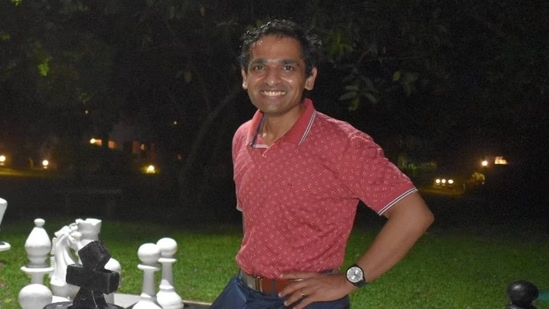For Sasikiran, chess has been a game of lost chances
On the eve of the 44th Chess Olympiad, Viswanathan Anand was taking part in a fun, interactive session with chess-inclined kids from across the country. After solving some tricky puzzles on the 64 squares, one of the first questions in the ensuing quiz session was, “Which Indian player holds the record for playing the most number of Olympiad matches?”  PREMIUM
PREMIUM
Most kids thought it was Anand while a few came up with Pentala Harikrishna as perhaps an educated guess. The answer surprised everyone in the room. It was Grandmaster (GM) Krishnan Sasikiran, who is part of the second-seeded Indian team in the open section. This is the 41-year-old’s 11th Olympiad, and he has participated in more than 100 matches till date.
“Of course, I am aware of the fact. I have always been happy to play for India. It has so happened that it has now become a record. My first Olympiad was in 1998 in Russia. I missed the 2016 edition in Baku,” says Sasikiran.
That’s not all. Sasikiran, who became a Grandmaster as a 19-year-old in 2000, was the first Indian after Anand to cross an ELO rating of 2700 (in January 2012). A four-time national champion, Sasikiran is part of the generation that followed Anand into chess, carrying expectations at one stage of building on the foundation set by the former world No 1.
For any Indian player showing potential, comparisons with Anand are almost inevitable. Sasikiran concedes that he has squandered some opportunities that could have elevated his standing in the game.
“You have to go through the grind. I missed some chances. I reached the fourth round of the World Cup once in Russia. Last year, I was very close to qualifying for the FIDE Grand Prix at the FIDE Grand Swiss in Riga. That also I missed. These chances keep popping up. If you are good enough to catch it, then you get your chance to play. But it is up to the person to grab it,” says Sasikiran, offering a forthright assessment of his career. “It is very difficult to compare. Everyone approaches life differently. Everyone has different circumstances. Comparisons happen eventually. What can you do?”
The likes of D Gukesh, R Praggnanandhaa and Nihal Sarin are now being subjected to the same comparisons, and they are coping with it rather impressively.
“Now, there is much more guidance that these youngsters are getting. These guys are getting guided by world champions. That is of course a huge difference. It's okay. It's different times,” he says, before adding a note of caution, “Of course, the attention on them is good for the game. But you know, you have to be careful with these things. They just need to keep the focus on chess.”
Sasikiran, of course, knows that early potential doesn’t always translate into titles and accolades. What could he have done better?
“Many times, I have had good tournaments but I haven't been able to finish well. For instance, in Aeroflot in 2019, I was leading the tournament with 5 wins out of 5. Generally, if you are leading such a strong tournament with such a good score, then you win the tournament. But I only finished third. Yes, you do regret not winning such strong events,” says the man from Chennai.
This is where Anand was different during his peak years. “When Anand is having a good tournament, it is almost certain that he will win the event. There is no stopping him. It comes to him naturally,” notes Sasikiran. “He has been able to stay at the top mainly because he was able to adapt to the changing circumstances.”
Sasikiran’s peak rating was 2720 in May 2012. He is currently at 2638 and wants to get his rating back to what it once was.
“Rating is always an objective. I want to get to a higher ranking. First of all, I just wanted to play good matches. That has always been my primary motive. Of late, I feel rating is the basis for everything – for invitations to tournaments and so on. I feel I should now concentrate on getting my rating back up,” he says, holding on to the belief that “something has to change at some point. We will see. It is still not completely over yet”.
Experience unrestricted digital access with HT Premium
Explore amazing offers on HT + Economist Start 14 Days Free Trial Already Subscribed? Sign In
Disclaimer: The copyright of this article belongs to the original author. Reposting this article is solely for the purpose of information dissemination and does not constitute any investment advice. If there is any infringement, please contact us immediately. We will make corrections or deletions as necessary. Thank you.







